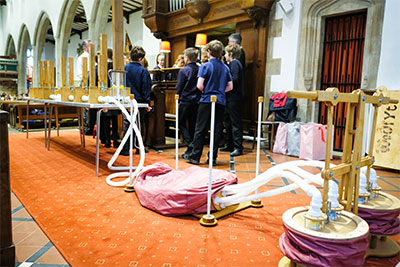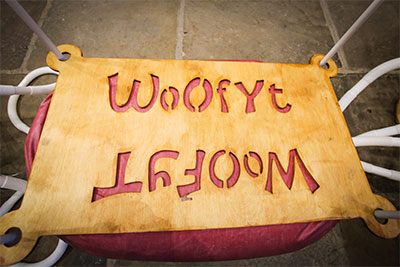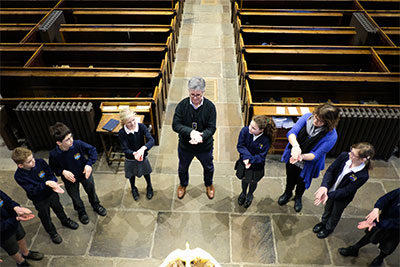How the WOOFYT works
How the Woofyt Works! from Fettle Animation on Vimeo.
How the WOOFYT project began
Jeremy Sampson is a professional violinist and teacher. Bill Cleghorn is a retired businessman and amateur engineer. In 2003 Bill’s company Cleghorn Waring Pumps Ltd, based in Letchworth Garden City, Hertfordshire, marked its 50th anniversary. The previous year, as Bill was starting to think about some kind of celebration, Jeremy told him about the ‘Arts & Business New Partners’ scheme. They decided to try and create a music-and-science project that would interest Letchworth Garden City’s primary schools, qualify for grant support and provide opportunities for the firm’s staff to take part.
Pumping water and other liquids was Cleghorn Waring’s business, but for this purpose air seemed a better working fluid**: it weighs a lot less than water and it flows more easily. It doesn’t make a mess if it leaks, and no-one gets wet. But it is, of course, invisible.
**A fluid is any substance, liquid or gas, that can flow. Air (a gas) and water (a liquid) are both fluids.
For the effort of pumping invisible air, Jeremy and Bill reckoned that a musical output would give children a tangible and attractive reward. By adapting pump technology to make musical sounds, they found themselves imagining a machine that would resemble an extremely primitive pipe organ – so primitive that children would be able to understand and manipulate it, while having fun and working together as a team.
Bill tried out some design ideas and Jeremy wrote a grant application.
A bit of history
For thousands of years music has been made by creating and controlling a flow of air through a pipe. Flutes and pan-pipes are ancient examples, in which the player’s lungs pump the air. Bagpipes introduce an air reservoir to maintain a continuous flow of air and music while the player takes a breath. This principle, allied with the development of the keyboard, has been mechanised and refined over centuries to give rise to the modern pipe organ.
The Woofyt, a remarkable hands-on working model of a pipe organ which helps student to explore the science and technology of the real thing.






